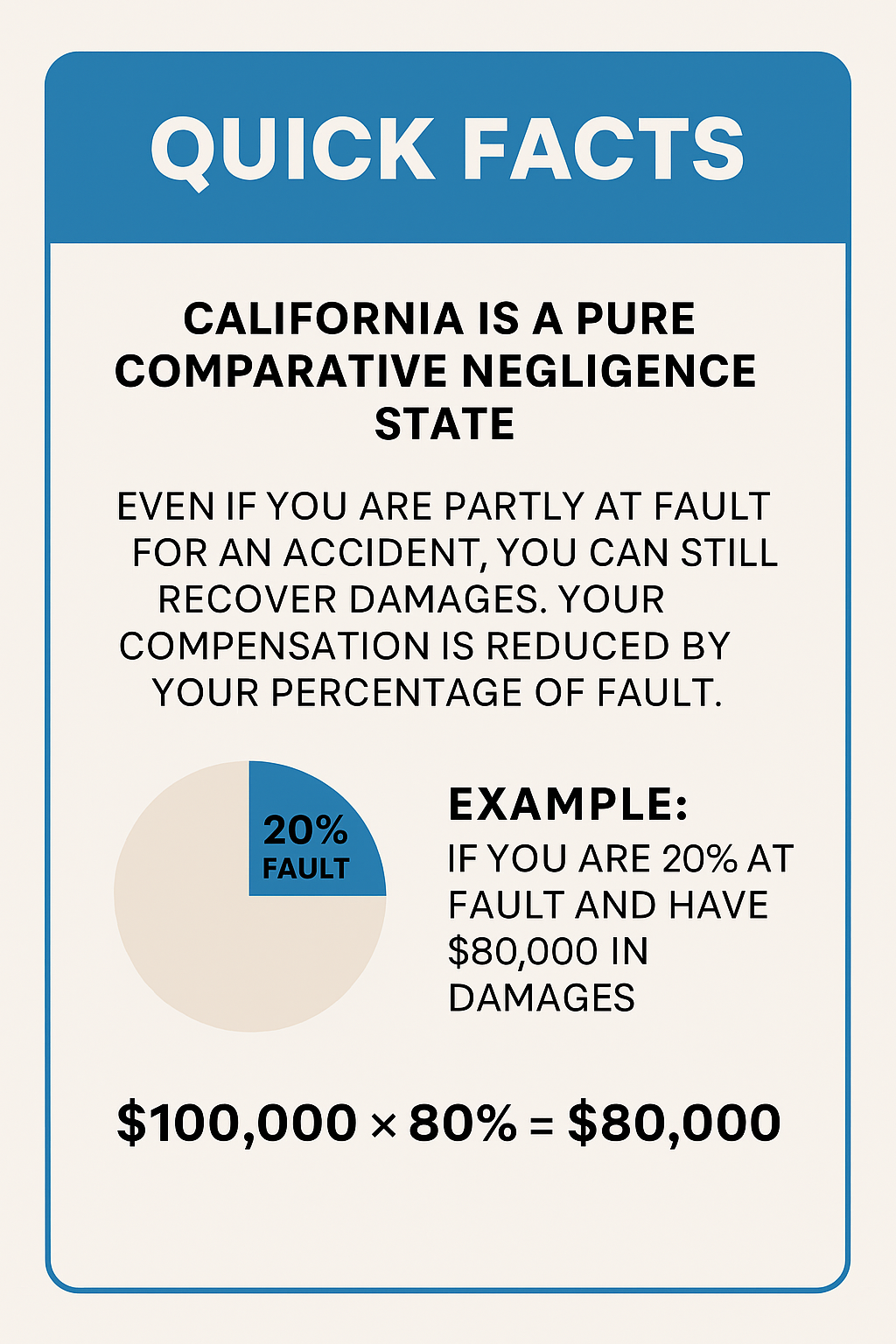Compensation When You’re Partly at Fault: Understanding California’s Comparative Negligence
August 25, 2025
After an accident, many people assume that if they were partly to blame, they can’t recover anything for their injuries. This belief stops some victims from even speaking with a car accident lawyer in Los Angeles – even though it’s simply not true.
The state follows a pure comparative negligence rule, meaning you can still receive compensation even if you are mostly at fault. Granted, the amount you recover will be reduced by your percentage of responsibility, but your right to seek damages remains intact.
What is the meaning of comparative negligence?

Comparative negligence is a legal concept used to determine how much each party in an accident is responsible for the damages. Under this system, the fault is assigned as a percentage. Your compensation is then reduced by that percentage.
California uses pure comparative negligence, which is one of the most victim-friendly systems in the country. In many other states, you lose your right to compensation if you are more than 50% at fault. In California, you can be 99% at fault and still recover 1% of your damages.
Example: How pure comparative negligence works
Let’s say you are driving down the Hollywood Freeway in Los Angeles and get into a collision at an intersection. You were speeding slightly, but the other driver ran a red light.
- A jury finds you 20% at fault for speeding.
- Your total damages (medical bills, lost wages, pain and suffering) add up to $100,000.
- Because you were 20% responsible, your award is reduced by 20% – meaning you can still recover $80,000.
Even if the numbers were reversed (i.e., if you were 80% at fault), you could still recover $20,000.
Why comparative negligence matters for accident victims
California’s comparative negligence law exists to ensure fairness. Accidents are rarely black and white, as there are often multiple contributing factors. Without this rule, many injured people would be left with nothing, even when another party played a significant role in causing the harm.
For victims, this means:
- Don’t assume you have no case just because you share fault.
- Insurance companies may try to overstate your fault to reduce payouts.
- Evidence matters – photos, witness statements, and accident reports can influence the fault percentage assigned to you.
How fault is determined
Fault in California personal injury cases can be determined through:
- Police reports from the scene of the accident
- Witness statements from people who saw what happened
- Expert testimony, such as accident reconstruction specialists
- Medical records linking your injuries to the incident
Ultimately, if your case goes to trial, a judge or jury will decide each party’s percentage of fault. In settlements, fault is often negotiated between your attorney and the insurance companies.
Challenges in comparative negligence cases

While the law allows you to recover compensation even with high fault percentages, comparative negligence cases often involve:
- Disputes over evidence (each side may present conflicting accounts).
- Aggressive insurance tactics (adjusters may claim you were more at fault than you actually were).
- Complex calculations (especially in multi-vehicle or multi-party accidents).
This is why having a skilled California personal injury lawyer is important. An attorney can help gather strong evidence, negotiate your percentage of fault, and fight to maximize your recovery.
Which car accident lawyer near me in Los Angeles is the top choice for comparative negligence cases?
Whether you were a driver going about your business or an injured passenger in a rideshare car crash, if you’ve been in any type of motor vehicle accident, don’t let fear about fault stop you from getting legal help.
Even if you think you were mostly responsible, you may still be entitled to thousands of dollars in compensation – and LA Accident Pros are here to make sure you receive what is rightfully yours.
In addition, we can help you with other aspects of the CA Work Comp system, whether it’s understanding permanent disability ratings or choosing the right settlement option. Schedule your consultation today!

















